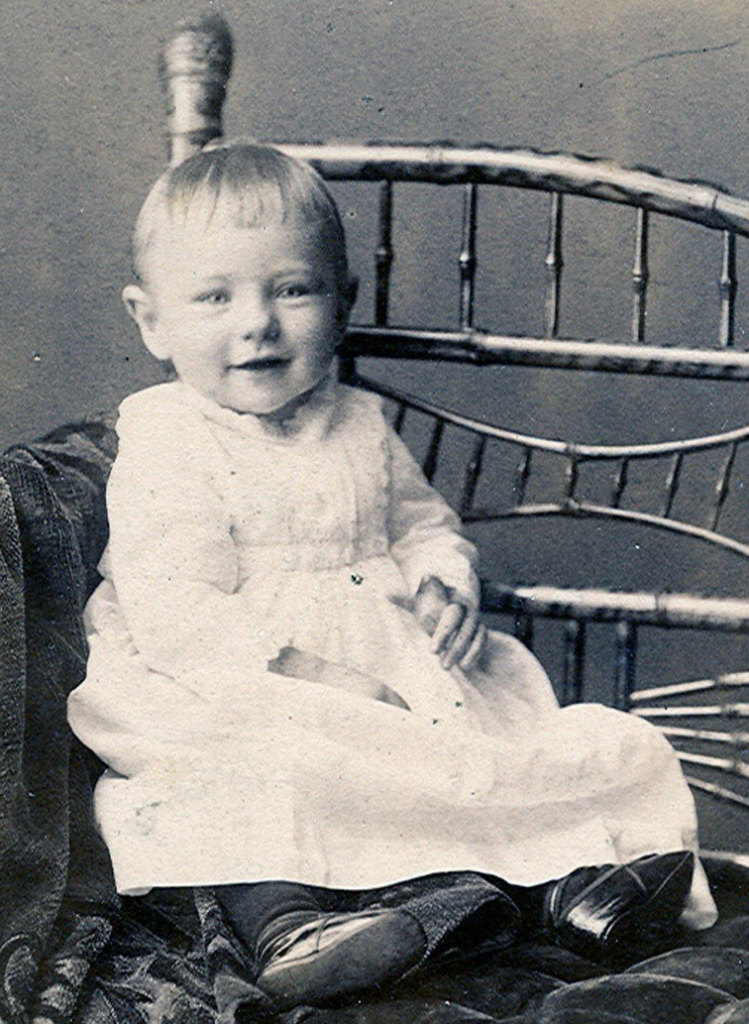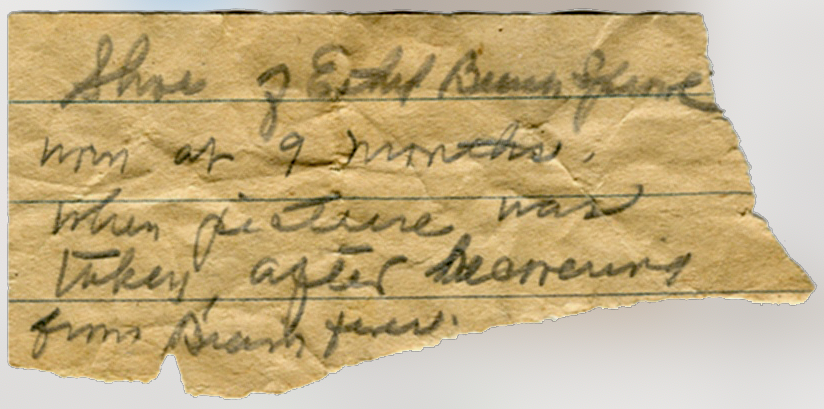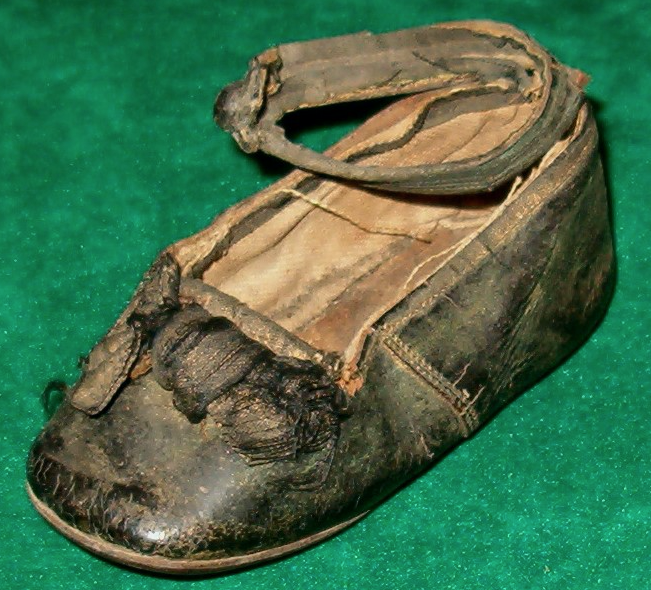Writer / Beth Wilder, Director
Jeffersontown Museum
 Many years ago, a child’s shoe was donated to the Jeffersontown Museum. It was a little girl’s slipper made of worn black leather, with an ankle strap and a frayed cloth bow. The interior lining was coming apart, and stuffed inside the toe of the shoe was a faded handwritten note: “Shoe of Ethel Beach Sprowl worn at 9 months when picture was taken, after recovering from Brain fever.”
Many years ago, a child’s shoe was donated to the Jeffersontown Museum. It was a little girl’s slipper made of worn black leather, with an ankle strap and a frayed cloth bow. The interior lining was coming apart, and stuffed inside the toe of the shoe was a faded handwritten note: “Shoe of Ethel Beach Sprowl worn at 9 months when picture was taken, after recovering from Brain fever.”
These words conjure up an image frightening at any time, but especially in the late 1800s when medical knowledge was not as advanced as it is today. At that time, effective treatment was not available for brain fever, which we now know as bacterial meningitis. Even in the early 1900s, between 69 and 90 percent of cases were fatal – with still higher fatality rates among children than adults – and in the spring of 1890, newborn Ethel Sprowl was at death’s door, having contracted the deadly disease. Sadly enough, that was not an uncommon occurrence at the time.
Sadder still is the fact that little Ethel’s own mother, Sadie Owings Sprowl, died of blood poisoning just seventeen days after giving birth to her on November 30, 1889, leaving Ethel in the care of her grief-stricken father, E.R. Sprowl (for whom Sprowl Road in Jeffersontown is named). E.R. tried his best to raise Ethel on his own, living in an apartment above Wells Drug Store on the southeast corner of the town square. It was hard for him to both earn a living and tend to a new baby all day, so his sister-in-law, Loulie Sprowl, stepped in to help raise Ethel while E.R. was out selling insurance.
Aunt Loulie contracted brain fever and died suddenly when Ethel was just six months old. It is believed that Ethel caught the disease from her and became gravely ill. Soon thereafter, family members received a telegram bearing only two words: “Ethel dying.”
One can scarcely imagine the anguish they must have felt at this terrible piece of news – first the Sprowls lost Sadie, then Loulie, and now the newest member of the family was about to depart from them as well. Obviously, Ethel’s story had a happy ending, as she was photographed at nine months of age, wearing her pretty little black leather shoes. Still, her illness and the fear of losing her must have made an indelible impression on the lives of those who cared for her, since they felt the need to preserve one of the shoes she wore in the photo as a symbol of her recovery and a reminder of just how close they came to losing her.

This is just one of countless examples of how precarious life could be for our forefathers, yet they paved the way for civilization as we know it – including advances in medicine. One could easily say that we owe our lives to them. Undoubtedly, there are myriad bits and pieces of history floating around out there, just like Ethel’s shoe, all with their own unique stories to tell – museums are full of such artifacts – and you would be surprised at just how many you might have lying around your own home.






